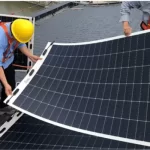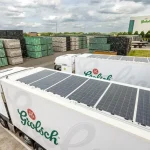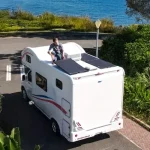Why the Size of Your Solar Panel Matters for Charging a 12V Battery
Did you know? According to the U.S. Department of Energy, around 70% of solar users face efficiency losses of more than 30% due to incorrect component matching. Ensuring that your solar battery charger is sized appropriately for your battery needs is essential.
In this guide, we’ll explore how to match your solar panel size to your 12V battery to ensure efficient and cost-effective charging. With precise calculations, real-world examples, and data-backed insights, you can confidently choose the right solar-powered battery charger for your system.
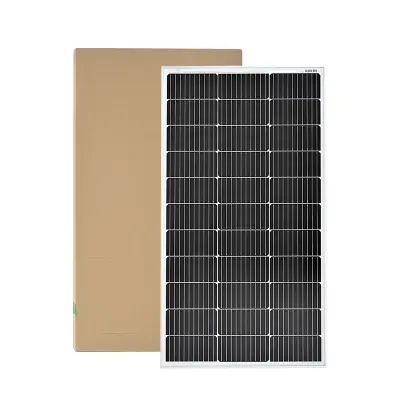
What Size Solar Panel Is Best for Charging a 12V Battery?
To determine the appropriate size of your solar battery system, you’ll need to consider the battery capacity and the number of peak sunlight hours available in your location. The basic formula for calculating the solar panel wattage needed to charge a 12V battery is:
Solar Panel Power (W) = Battery Capacity (Ah) × Battery Voltage (V) × 1.2 / Peak Sun Hours
For example, if you have a 100Ah 12V battery, and you receive an average of 5 hours of direct sunlight per day, the calculation would be:
100Ah × 1.2 ÷ 5 hours = 240W solar panel
Thus, to charge a 100Ah 12V battery in 5 hours of sunlight, you’d need a solar panel system of at least 240W.
Here’s a breakdown of recommended solar panel sizes for common 12V battery capacities:
| Battery Capacity | Recommended Solar Panel Power | Panel Size (Standard) |
|---|---|---|
| 50Ah | 120W | 65cm x 54cm |
| 100Ah | 240W | 164cm x 99cm |
This table gives you a clear starting point for your solar system batteries. Adjustments may be necessary depending on the specific location and usage conditions.
How Many Solar Panels Do You Need to Charge a 12V Battery?
When designing a solar-powered battery charger system, you must decide whether to wire your solar panels in series or parallel. For 12V systems, it’s important to ensure that each panel’s voltage exceeds the battery’s voltage by a safe margin. Specifically, the panel voltage should be at least 18V to account for losses in the MPPT (Maximum Power Point Tracking) controller.
Another important consideration is the weather. In regions where cloud cover is frequent, it’s wise to add more panels to compensate for the reduced sunlight. According to NASA’s meteorological data models, for every 20% increase in cloudy days, you should increase your solar panel array by 30% in size to ensure consistent charging.
5 Core Components You Must Know for Efficient 12V Battery Charging
To ensure your solar system batteries charge efficiently, you’ll need to carefully select and maintain several key components in your system.
Solar Charge Controller (PWM vs. MPPT):
While PWM (Pulse Width Modulation) controllers are cheaper, MPPT (Maximum Power Point Tracking) controllers are more efficient and can increase your system’s efficiency by up to 30%. MPPT controllers are ideal for systems with fluctuating sunlight.Deep Cycle Battery (AGM vs. Lithium):
The battery type you choose will impact the overall lifespan and efficiency of your system. Lithium batteries offer higher cycle life, but AGM batteries are often more affordable and work well for off-grid applications.Photovoltaic Wiring (AWG10 vs. AWG12):
The size of the wire you use affects the voltage drop and energy loss in the system. For longer wire runs, use AWG10 to minimize power loss.Circuit Breaker:
Always size the circuit breaker according to the expected current (typically 1.25 times the maximum current). This protects your system from overloads.Monitoring System:
Regularly monitor your system’s performance with a voltage/current monitoring system. This will help you spot issues like shading, panel degradation, or wiring problems that could affect efficiency.
How to Efficiently Charge a 12V Battery with Solar Panels? Step-by-Step Guide
Here’s a step-by-step guide to help you efficiently charge your 12V solar battery charger system.
Step 1: Calculate Your Daily Energy Consumption
Multiply the wattage of your devices by the number of hours you expect to use them. This will give you your total daily energy consumption in watt-hours (Wh).Step 2: Determine Your Battery Storage Needs
To calculate the minimum battery capacity required, divide your daily energy consumption by 12V and multiply by 1.2 (for system losses).Example:
Total energy consumption = 500Wh
Minimum battery capacity = 500Wh ÷ 12V × 1.2 = 50AhStep 3: Match Solar Panel Power
Using the formula from section 2, match the required solar panel wattage to your daily energy needs. Adjust for geographic location and solar insolation differences (refer to NREL’s Global Solar Atlas for more data).
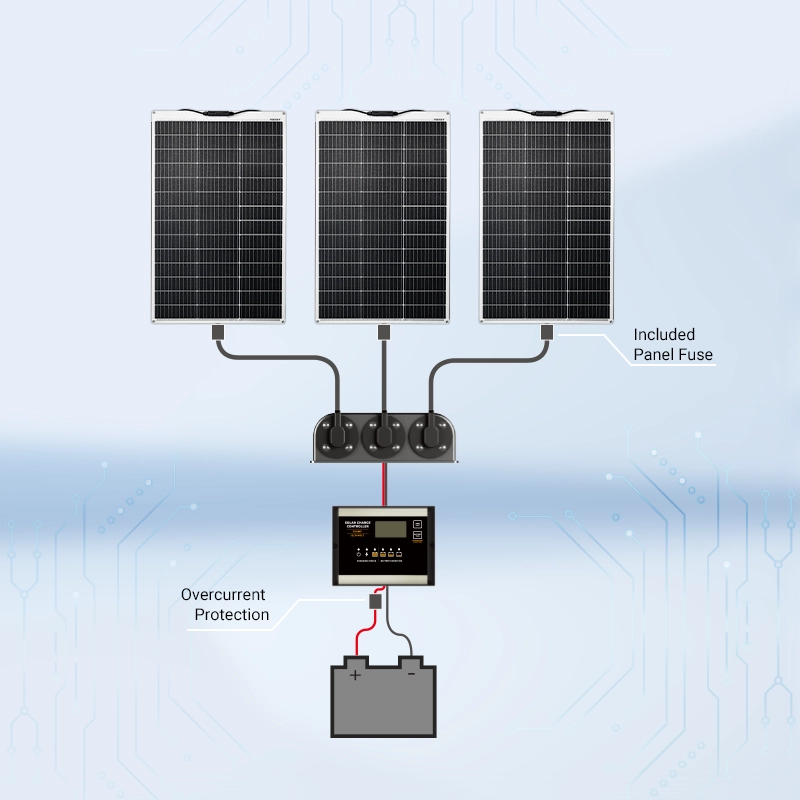
How Big of a Solar Panel Do You Need to Charge a 12V Battery?
When considering the solar panels charging 12 volt batteries, size is everything. Not only do you need to factor in the daily solar output and your battery’s capacity, but also the temperature and tilt angle.
- Temperature Compensation: For every 1°C increase in temperature, crystalline silicon panel efficiency drops by about 0.5%. This is important when working in hot climates.
- Panel Tilt Optimization: To get the best performance, your solar panels should be tilted at an angle that is about 15 degrees less than your latitude. For example, if you’re at 30° latitude, your panel tilt should be around 15°.

How Long Does It Take for a 100W Solar Panel to Charge a 12V Battery?
If you’re using a 100W solar panel to charge a 100Ah 12V battery, here’s the basic calculation for how long it will take to charge:
Charging Time (hours) = (Battery Capacity × 12V) / (Solar Panel Power × 0.7 Efficiency Factor)
For example:
Charging Time = (100Ah × 12V) / (100W × 0.7) = 17.14 hours (ideal sunlight conditions)
So, under perfect conditions, it would take just over 17 hours of direct sunlight to fully charge your 12V battery using a 100W solar panel.
Can a 300W Solar Panel Charge a 12V Battery? Overpowered System Risks
A 300W solar panel is capable of charging a 12V battery, but it’s important to be mindful of voltage limitations. For a 12V system, the input voltage should not exceed 50V, which is the maximum voltage for many charge controllers.
To prevent overcharging, use a MPPT controller with overcharge protection. For instance, the Victron MPPT 100/30 controller has been tested and confirmed to handle up to 300W in a 12V system. However, if the system is oversized, it could lead to inefficiencies, excessive heat, or potentially damage the battery.
Final Thoughts: 3 Key Tips to Avoid Solar Charging Failures
As a solar engineer, I can’t stress enough the importance of following these tips to ensure the longevity and efficiency of your system:
- Don’t Overlook Line Losses: For runs longer than 3 meters, use AWG8 cables to reduce voltage drops and improve efficiency.
- Regular Cleaning and Maintenance: Dust and debris on panels can reduce efficiency by up to 40%. Ensure your panels are regularly cleaned to maintain optimal performance.
- Leave a 20% Margin for Redundancy: Over time, solar panels degrade. Allowing for a 20% performance buffer will ensure your system continues to perform well even in extreme weather or after several years of use.





